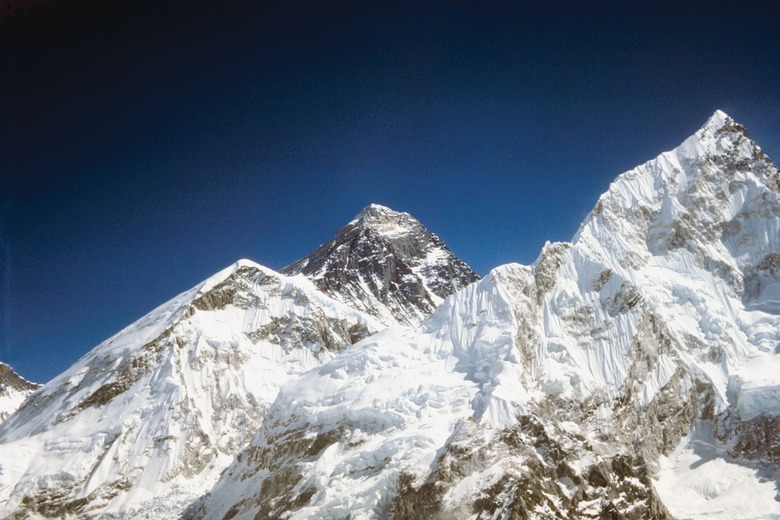The Effect Of Freezing & Thawing On Rock
What is the effect of freezing and thawing on rock? Freeze-thaw weathering is the result of this process. A type of physical weathering (also called mechanical weathering), freeze-thaw cycles cause the breakdown of rocks into smaller pieces. While freeze-thaw weathering does not change the mineral composition of rocks it acts upon, it does make them more vulnerable to chemical weathering, which alters the compounds in rocks.
Often, the processes of physical and chemical weathering work together over long periods of time. Freezing and thawing of water in the joints and cracks of rocks creates smaller fragments with more surface area, making rocks more susceptible to chemical and biological weathering.
How Freeze-Thaw Weathering Works
How Freeze-Thaw Weathering Works
A mechanical process, freeze-thaw weathering causes the joints (cracks) in rocks to expand, which wedges parts of rocks apart. Because water expands by about 10% when it freezes, this creates outward pressure in rock joints, making the cracks larger.
Joints occur naturally in rocks as a result of their formation. Fractures that are not offset, joints do allow for the entry of water into rocks.
In climates where temperatures dip below freezing in the winter, moisture in the joints of rocks solidifies as ice. Over time, after several cycles of freezing and thawing, joints get large enough that bits of rock start to fall off in smaller pieces. This breakdown of rock happens faster at higher altitudes, where many freeze-thaw cycles can occur during the year.
Other Kinds of Physical Weathering
Other Kinds of Physical Weathering
Freeze-thaw weathering is just one way that rocks break down via mechanical processes. In a similar way, salt crystal growth can also cause rock joints to expand. Crystals may develop inside rock joints when water on the rocks evaporates, as ions in the water precipitate during this process. Growing crystals inside joints can also wedge rock joints apart. Salt crystal growth inside rock joints can often be found near oceans, where rocks are exposed to saltwater.
Another type of physical weathering is called thermal expansion. Although rocks can withstand gradual changes in temperatures, sudden shifts between hot and cold may cause rocks to crack. Because rocks are made of different minerals, the differences in contraction and expansion of different areas with temperature changes may also create breakage.
Forest and grass fires create intense heat and may cause thermal expansion of rocks. Weathering caused by temperature changes is also common in deserts, where temperatures can change substantially from night to day.
Types of Weathering
Types of Weathering
Physical and chemical weathering are the two main types of weathering; both processes break rocks into smaller pieces or crystals. While physical weathering does not change the chemical composition of rocks, chemical weathering does. Weathering caused by freezing and thawing is one example of physical (also called mechanical) weathering.
In chemical weathering, minerals in rocks react with water, oxygen and other compounds in their environment. Chemical weathering causes the dissolution or alteration of minerals in rocks, which ultimately leads to their breakdown. Often, rocks that have been affected by chemical weathering will form oxides that change the colors of the rocks.
Along with physical and chemical weathering, geologists also recognize the effect that other living organisms have on rocks. For example, tree roots that grow into joints of rocks cause wedging, which is a type of physical weathering. Chemical weathering can be accelerated by the acidic solutions of bacteria that live on rocks, and burrowing animals can make rocks more vulnerable to both physical and chemical weathering by bringing them to the surface of the earth.
It may be difficult to separate the effects of different types of weathering, as sometimes they have a synergistic effect. The interactions between physical and chemical weathering can accelerate the rate at which rocks break down, and some types of rock are more susceptible to weathering due to their composition, location and environment.
Cite This Article
MLA
Sloane, Christina. "The Effect Of Freezing & Thawing On Rock" sciencing.com, https://www.sciencing.com/effect-freezing-thawing-rock-8738243/. 30 September 2021.
APA
Sloane, Christina. (2021, September 30). The Effect Of Freezing & Thawing On Rock. sciencing.com. Retrieved from https://www.sciencing.com/effect-freezing-thawing-rock-8738243/
Chicago
Sloane, Christina. The Effect Of Freezing & Thawing On Rock last modified August 30, 2022. https://www.sciencing.com/effect-freezing-thawing-rock-8738243/
